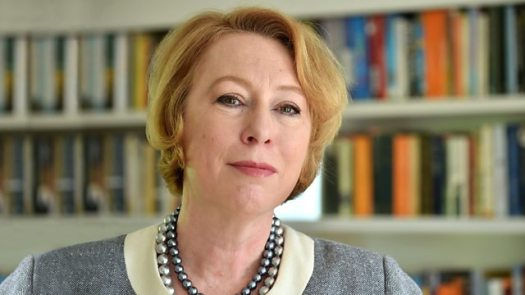A business turnaround is more likely if its directors agree a shared purpose
- Ciaran Fenton
- May 30, 2018
- 4 min read

This article was first published by Resolve Group UK in May 2018:
A successful business turnaround is more likely if directors have a shared purpose and a Relationship Grid
Board behaviour and effectiveness consultant, Ciarán Fenton, sets out a process to achieve high levels of unity on boards during the stress of a turnaround programme
A non-executive chairman I was working with once remarked wryly: "few things improve business morale more than a 25% increase in revenue."
The opposite is also true. Tension, anxiety and especially conflict increase under the pressure of a downturn or, in what are euphemistically referred to as, "challenging trading conditions."
So when a business is going through a formal turnaround process, these tensions are at peak and are not helped by emotionally unintelligent turnaround methods like "brutally striping out costs and driving people hard". These may turn things around briefly, but not sustainably.
The business purpose and the personal purpose of each director are inter-dependent. One depends on the other. It follows that if these are not clear and shared then the strategy and behaviour of each director will not match the business strategy and behaviour plan.
I call this Purpose, Strategy and Behaviour Conflict or "PSB Conflict". PSB Conflict is the enemy of successful turnarounds. You can have all the cost cutting, restructuring and "transformation" you like but it won't work unless the people around the Board table are making decisions using a shared personal and organisational PSB.
If one director's underlying purpose is to shift blame and shame for the downturn to others, then their strategy and behaviour will match their purpose, no matter what decision is under discussion.
This applies to all possible harmful director purposes in turnaround situations including a secret purpose to exit as soon as possible; focusing only on their area of concern or putting unfair pressure on other functions, especially on the sales function.
Conversely, positive shared purpose and the opposite of the behaviour above, can raise morale and increase the probability of a successful turnaround. But even if the directors' purposes are aligned and mutually supportive, there are often crucial differences of opinion on business purpose, strategy and behaviour planning not aired and shared.
For example, some directors may be wholly focused on short-term EBITDA while others feel that sustainability requires a balanced approach to short-term and medium-term decision-making.
These differences are commonplace, but in turnaround situations, they become acute and can result in bullying behaviour by stronger directors over those perceived as weaker, for whatever reason.
Boardroom behaviour and power dynamics can make or break companies during the turnaround period. Does it not make sense, therefore, to pay attention to these? But the issues are tricky to address.
I advise boards to follow a three-step process, facilitated or not, to do so:
Step 1 Each director should articulate their PSBs to colleagues, as in:
my career objective is X because I care about Y
my strategy for achieving that here is Z
my behaviour plan, therefore, is A, B, C but I need help with D
Step 2 The Board should review the business PSB as in:
our shared business purpose now, in the light of our problems, is X
our turnaround strategy is Y
our behaviour plan for implementing Y to achieve X is Z
Step 3 So, we need to agree on "soft contracts" with each other to deliver the PSBs
this is what I need from you, Director X, Y or Z
what do you need from me?
do we have a soft contract?
A main, or operating, board consisting of, say, seven directors would negotiate six soft contracts each and legislate for the breach of these. By that I mean they would expect, because people are human, that people will sometimes fail to deliver on their soft contracts because, usually, the thing that most directors want from other directors is that they change their worst behaviour in some way.
So if, for example, one director is notorious for not accepting responsibility for mistakes then that director would be asked to "own up" at least ten times more than usual in every hundred situations. That's just 10% change or "small change" as I like to call it. But even small change is hard.
If every director agreed to make a small change in their behaviour the chances of the turnaround programme succeeding are much higher.
And the chances are even higher if directors manage their relationships more proactively so that they can spot when "Green" relationships are turning to "Amber" or "Red". I have developed a simple tool, called The Relationship Grid™ - download here - to track relationships using this RAG method:
On a simple spreadsheet (see below), making each cell a large text box, list your relationships by name in the first column starting with "the business", then yourself, then your Family with a line for each, then your boss if you have one, then peers, then people you lead, then clients, then stakeholders etc.
Head the second column "PSB" and type in a summary PSB for each relationship as you understand it.
Head the third and fourth columns with Best Outcome and Worst Outcome over the next hundred working days, roughly one financial quarter.
Head the fifth column RAG. Regularly rate each relationship Red, Green or Amber and decide what do about each.

In a turnaround situation, a board that is mature enough to review relationships openly is more likely to succeed because the issues will be out in the open.
I acknowledge that this process requires a high level of trust and emotional intelligence on the Board. But this is achievable, admittedly with some pain and effort, if everyone is committed to a shared purpose, the absence of which may have been responsible for the problems in the first place.
May 2018





Comments